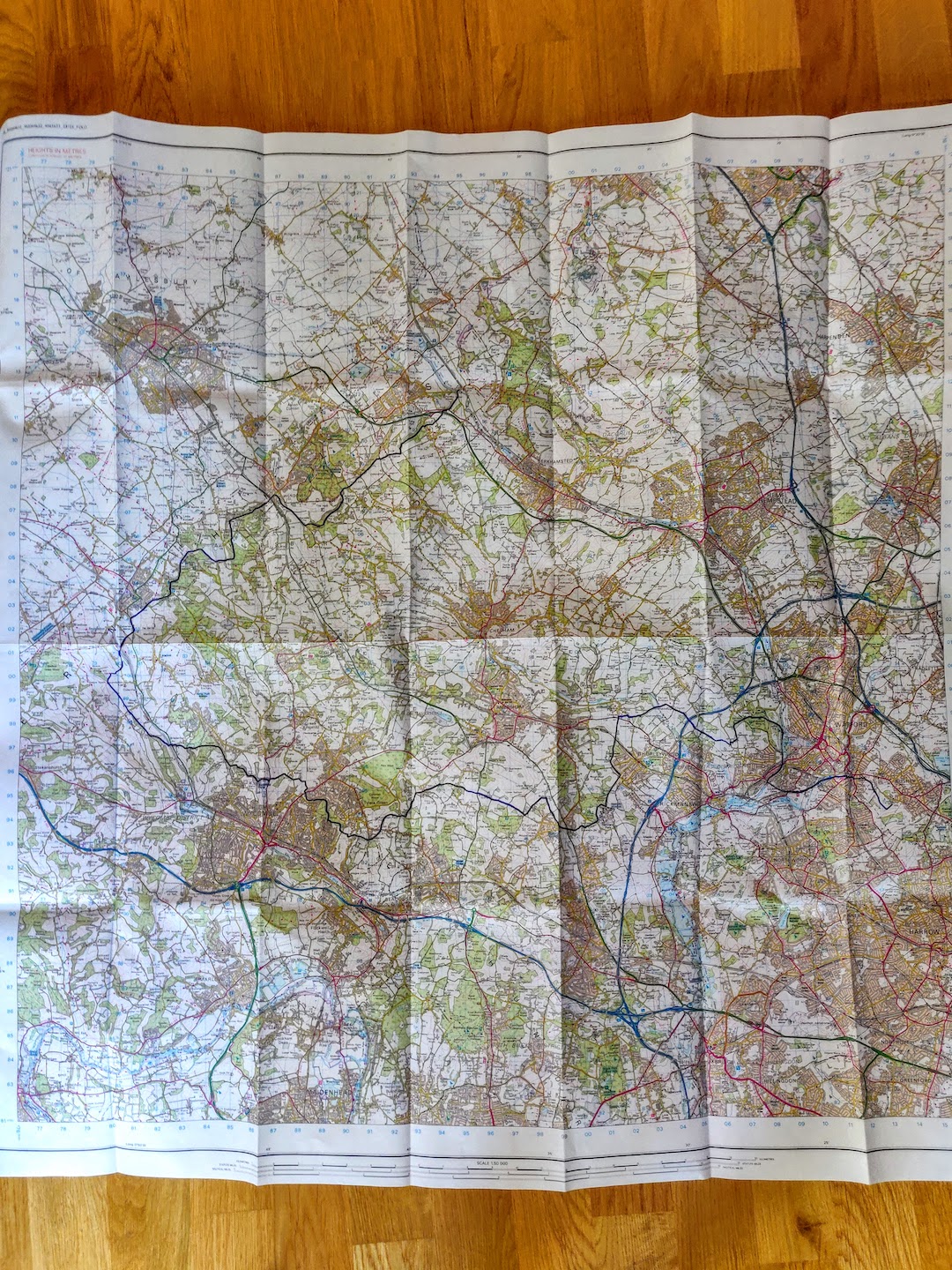The Big Five-O
Posted by Ed on July 3, 2020
Edit: Whilst this was never intended to be a fundraising run, in light of the ongoing Yemen crisis I have opted to emulate the ‘Run 5, donate 5’ movement and donate £50 to Save the Children. Up to 11.5 million children are in need of humanitarian aid to survive what officials are calling a ‘perfect storm’ of natural and man-made disasters, which Covid-19 has only amplified. Please consider donating – even £5 can go a very long way.
Well, here we are. Less than 24 hours to go until my first 50 miler. It’s certainly not going to be the way I thought it would be.
Way back in the middle of New Zealand’s 2019 winter, nestled on a friend’s couch after a slap-up meal and perhaps one too many glasses of wine, a calendar notification buzzed on my phone: ‘North Downs Way 50‘. Up until that moment I’d forgotten entirely about my half-baked ambition to run my first 50 miler in May 2020, but with tickets now having gone live – and in light of Centurion events’ notoriety for quickly selling out – I had little time to debate.
A few minutes later, it was done. I let my decision sink in. My skin bristled with anticipation.
Fast forward seven months to March. I’m half jogging, half sliding my way through ankle-deep mud a few miles from my parents’ home in Hertfordshire. The country is in lockdown, a word I’ve since heard so many times it resonates as a dull thud. All is uncertain, except the NDW 50 – now postponed to July 4th (much to my relief.)
So I trained, harder and more consistently than I’ve trained before. I hit my first 80km week – then I did three 90km weeks in a row. Normal for some; novel for me. For the first time, 20 mile long runs became comfortable, comprehensible, and manageable, the same way a weekly half marathon had in my first year of running.
Drawing from this twelve week block of training, and from my experience last November finally nailing a 50k race, I began to see how 50 miles might actually be possible. Two twenty milers and a ten miler – that’s understandable. Sort of.
But all through this, I half-knew that I was likely setting myself up for disappointment. As the weeks went by and the UK became the worst-hit country in Europe by the pandemic, July 4th began to sound too early for a race to be staged. Centurion did their best to provide race day safety regulation involving socially distanced start/finish areas and sanitized aid stations, but in the end it was never going to work so soon.
A day or two before my penultimate long run, I received the news that the NDW 50 had been postponed to its contingency date of November 28th. This is of course completely understandable, and I hold no ill will towards the organisers for their decision – but it did leave me with decisions of my own to make.
As I saw it, I had three choices:
- Run 50 miles on a route of my own making
- Attempt a local 45 mile FKT (the Hertsmere Way)
- Carry on training and ramp my volume up right through summer
In the end, two experiences conspired to make me opt for a solo 50 miler of my own making. The first was supporting my friend Spencer on his own solo 100 mile run along the London LOOP. Spending a couple of crisp, summer evening hours in pursuit of a lofty goal like that served as a weighty reminder of just how much I love the adventurous fringe of running as a sport.
The second experience was reading Rickey Gates’ book Cross Country. Or rather, listening to an interview with Rickey on Rich Roll’s podcast, during which, in his own characteristically subdued manner, he encouraged listeners to plan and execute a running adventure of their own, irrespective of a race or an FKT.
I realised, listening to Rickey then, that I had been handed an opportunity – a chance to put to good use weeks of excellent training in any way I saw fit. Whilst initially I had lent towards running an FKT of the Hertsmere Way (which as of yet has never been run in one go), it became clear that the added pressure of completing the route in as fast a time as I could manage was, whilst exciting, perhaps not what I wanted for my first solo ultra-distance experience.
The Route
Instead, I decided to put together my own route. Having always been drawn to point-to-point runs, I decided to start at Tring station in the Chiltern Hills, easily accesible via a twenty minute train ride from Bushey, where my parents live.
After an hour or so (and a dozen subsequent revisions), I settled on a route which follows The Ridgeway westwards for 26 kilometres (about 16 miles) before veering south, skirting through a handful of woods around the edge of High Wycombe, and joining the Chiltern Way. It follows this trail east towards the delightfully named Sarratt Bottom; from there, the route nips under the M25 and follows the Grand Union Canal towards Croxley Moor Common, which it traverses to join the Ebury Way. Upon reaching Bushey, after a quick trip through Villiers and across Attenborough Fields, my 50 mile run finishes with a poetic flourish at ‘The Gate’, the finish line of my own baby of a race, the Merry Hill Challenge.
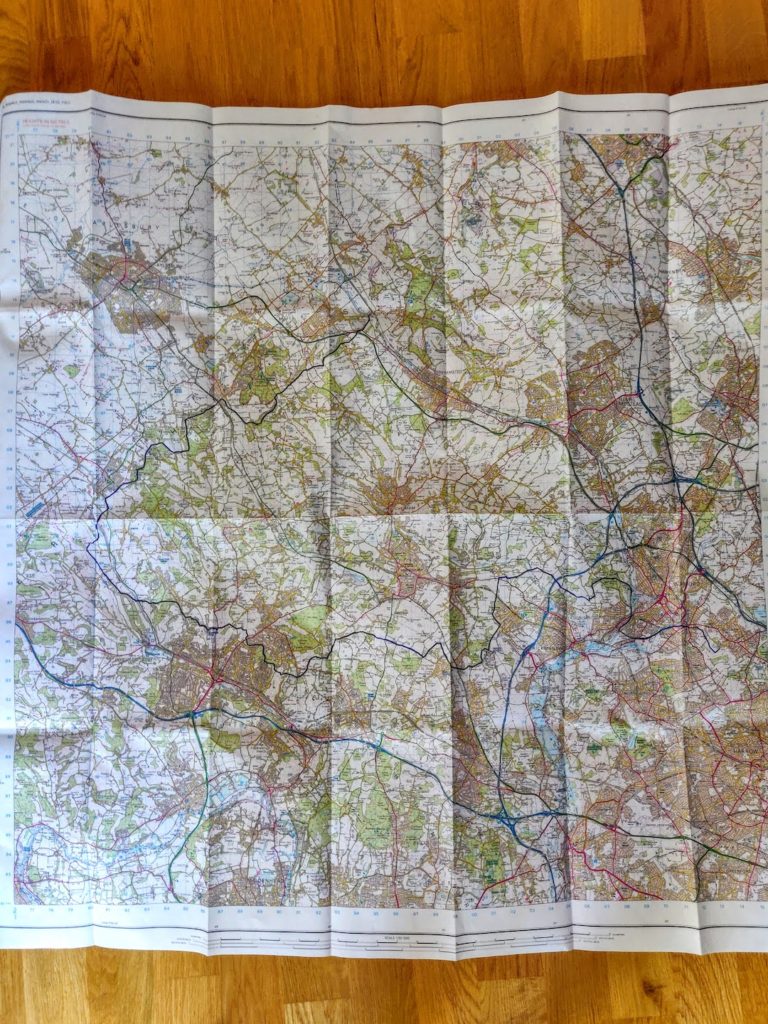
The Plan
It’s important to note that whilst I have done everything I can to ensure I am set up for success come July 4th, this is a massive unknown for me. This will be not only 20ish miles longer than I’ve run before, but doing so on my own will require an elevated degree of focus and run management. As such, built into my plan is the awareness that at any point things could change, and I will be forced to roll with the punches.
With that being said, here’s how I’m approaching getting this thing done.
Nutrition & Hydration
For myself and undoubtedly most ultra runners, this is the biggest factor. More than fitness, more than strength, having a happy tummy is my biggest concern when I think about running 50 miles.
Over the course of my training block, I’ve experimented with a number of different nutrition solutions on four 20+ mile long runs, including real food, multiple brands of gels, and Tailwind. In the end, I’ve settled on a combination of Tailwind and GU Roctane gels.
My plan is to drink 500ml of water per hour mixed with 60g of Tailwind, which should give me adequate fueling all day. However, given that in all my long runs I have fallen short of that target, and given that conditions on the day look pretty cool (meaning I won’t be feeling the need to gulp down water as much), I’ll be supplementing these liquid calories every couple of hours with a GU Roctane gel (lemonade flavour.)
I’ll be sourcing my water from a handful of resupply options on route, mostly newsagents or shops in towns that I pass through. A couple of friends of mine may be running with me at times, but I want to make sure that I’m not relying upon them showing up at the right time. I’ve packed a dozen or so 30g baggies of Tailwind (two per bottle) alongside a collapsible funnel for easier refilling. It’s not a perfect solution, but with no crew or aid stations it’s a good compromise, and it has the added benefit of meaning I might have something to run from, in the form of law enforcement.

I’ll be starting out with two 500ml soft flasks full of Tailwind – plenty to see me through to my first water refill point in Wendover at 13km. There, I’ll refill one of them and fill up two more bottles stashed in my Naked Running Band, already with 60g of Tailwind powder in them. This should be enough to get me to my next refill point, which will either be a cafe at 36km or, if that’s not open, a Tesco’s Express garage at 39km. After that, a newsagents in Chalfont St Giles at 54km should allow me to fill up again and see me through the final 26km.
All of which is to say that I’ll never have to run more than 26km without refilling. This is, of course, much longer than would be the case in a staged 50 mile race, but with a maximum carrying capacity of 2 litres, it’s not so long that I envisage any problems, especially as it won’t be too hot. My longest run of 36km was completed without the need to refuel, so I don’t expect to run into much trouble on this front.
In addition to this, I’ll be popping a couple of Revvies caffeinated strips every few hours for a little boost. As an unashamed coffee addict I always notice a bit of a lull in my mood if I’m out running at around 11am, when I’d usually have a coffee. This little calorie-free strips are magic for alleviating that and putting some pep in my step.
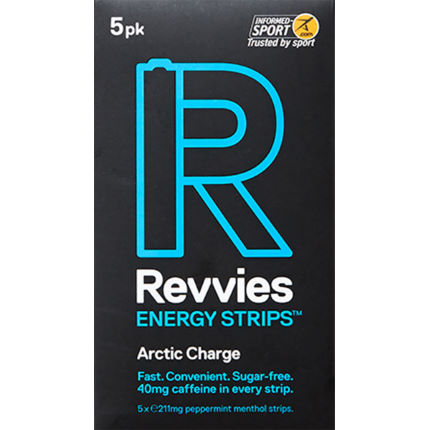
I’ve also found that, for me, what I eat before my long run plays a crucial role. On two of my long training runs, I ate toast or an English muffin beforehand – and in both cases, my stomach turned to a solid brick after around three hours. This might, of course, be a coincidence, or caused by something else entirely like dehydration (both runs were on the warmer side). However, given that my stomach held up great on the other two long runs, where I ate nothing at all beforehand, I’m going to be going with that strategy. I’m used to training without breakfast; I’ve raced 50km without breakfast; I don’t see any need to change this for 50 miles. I’ll find out if this is wise soon enough – I’m just making the best decision I can with the information I have.
Gear
I’ll be using my trust Salomon 3 litre pack, which I’ve had for years now. I thought about using at 15 litre Inov-8 backpack, but it just felt like overkill. Using a stuff sack means I can fill my Salomon pack with far more gear than you might think possible – in conjunction with my Naked Running Band, I’m able to carry everything I need for 50 miles.
I made a point of running all my long runs with as much gear as I might need on the day – this included 1.5 litres of water, a waterproof jacket, thermal long sleeve top, emergency blanket, whistle, and 1000 extra calories in the form of gels. I always carry a small tube of Gurney Goo which, as I found out on a hike last weekend, is not only great for hot spots but also for insect bites.
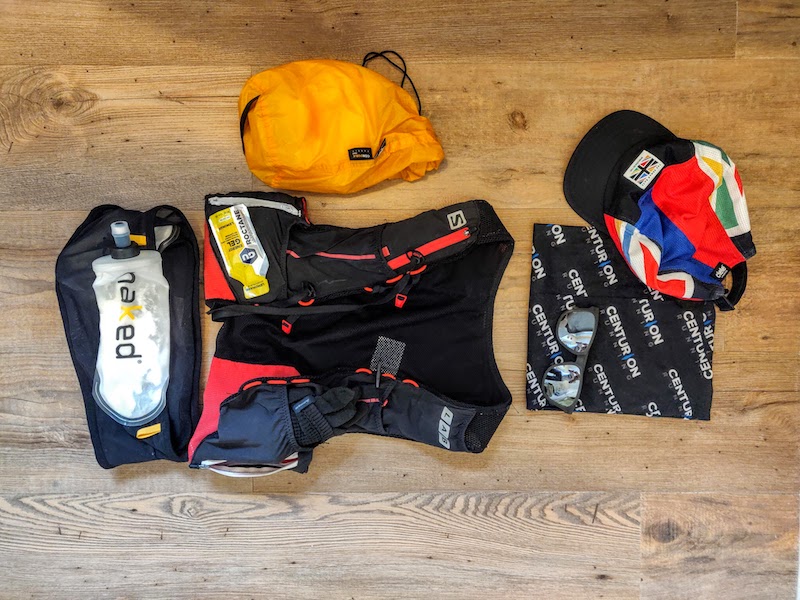
As it turns out, I don’t anticipate carrying as much on the day as I have in training. The weather forecast is cloudy with a chance of drizzle, but with temperatures comfortably in the 16-20°C range (60-68F). As a ‘hot blooded’ individual, I’ve only ever felt the need to wear any kind of thermal top on a handful of particularly extreme runs, either at high altitudes or at temperatures well below zero. So I’ll probably be leaving my thermal top at home, and relying upon my Aussie Grit rain jacket should I get cold.
Shoe choice is something I’ve deliberately kept open. I’ve done most of my training in a pair of Nike Terra Kiger 3s, an excellent shoe but one which doesn’t hold up particularly well in wet conditions due to its fabric upper. In all likelihood, given the forecast, I’ll be wearing my trust Hoka Speedgoat 3s, which have so far seen me through two 50ks and a couple of trail marathons with happy feet intact, and are still holding up strong.
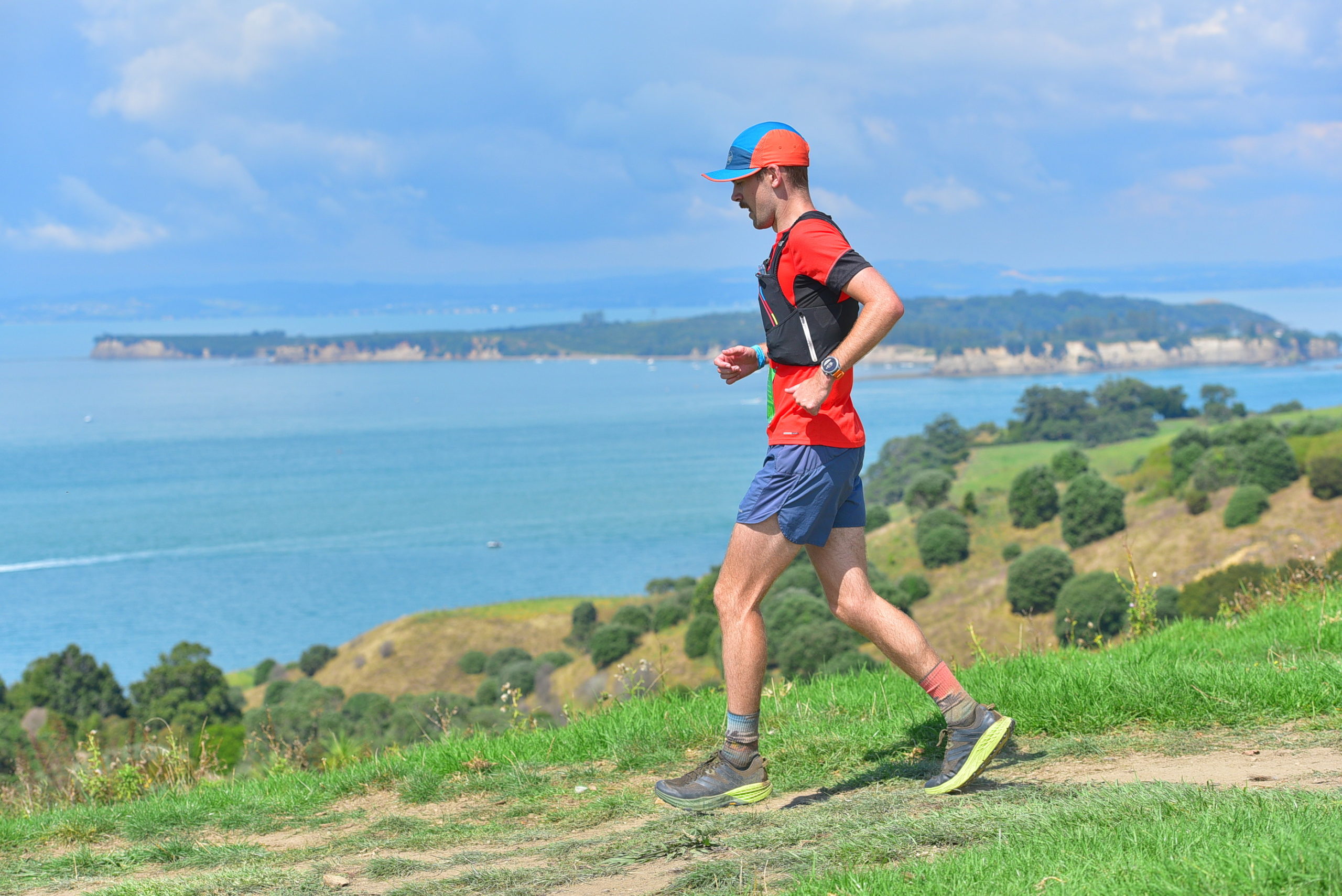
Pacing
Two weeks ago I completed a ‘dress rehearsal’ for my run, catching the train up to Tring and running the first 8km of the route before looping around Wendover Woods and heading back. I’m really, really glad I did this – if nothing else, I learnt that the long, gradual climb over the first 5k is not trivial. It’s only 100m or so, but the constant uphill grade meant I felt like I was going nowhere fast.

As a result, ‘Start slow, stay slow’ is my mantra of the day. I don’t anticipate covering those first 5 kilometres any faster than 30-35 minutes, and that’s the kind of pace I’ll be aiming to stick at for most of the day. There’ll be plenty of walking, especially during the extremely undulating first half.
That being said, I do like to set goals to give me something to focus on. My hope is to run a negative split and finish strong. My A goal, which is deliberately ambitious, is a 9 hour finish (6:45/km pace); my B goal is 10 hours (7:30/km pace); and my C goal, as ever, is just to finish. Injuries aside, I will not DNF – after all, nobody is coming to get me.
